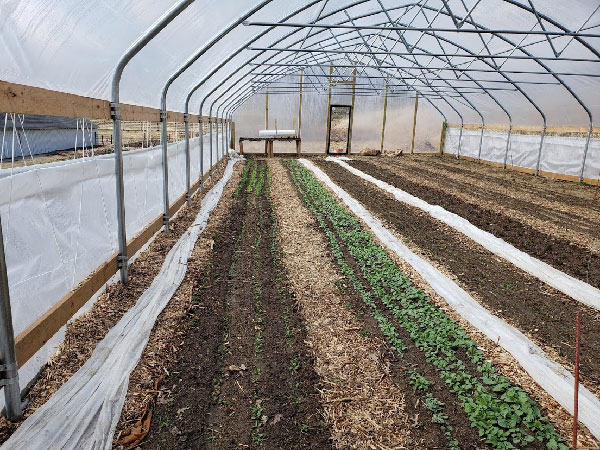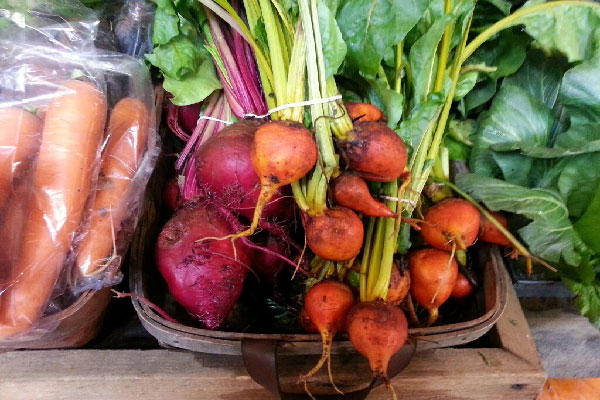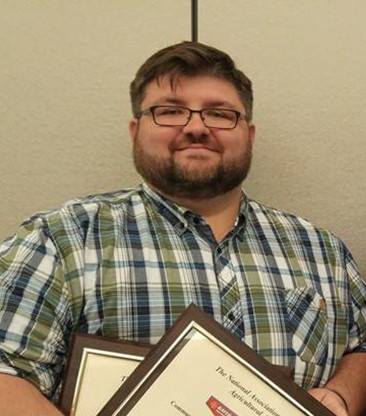Chrysanthemums are popping up at garden centers and grocery stores, and fatigue may be setting in with some gardens…and gardeners. And while we’ve yet to experience the first brush with cool fall temperatures, it’s time to start thinking of season extension techniques to keep the garden going late into fall and even winter – especially if you’ve taken the time to plant some fall crops.
And if you haven’t planted any fall crops, it’s not too late to get in some leafy greens like spinach and arugula, lettuce, and root crops like beets, carrots, and radishes. Just as long as you get them up to a harvestable size before the really cold temps settle in, you can typically keep them going in the garden well past the first freeze with some season extension.
It can be even possible to add a few more weeks to the life of warm-season crops like tomatoes and peppers using some basic season extension techniques, just in case you still have some healthy, productive plants worth saving.
There are several technologies available to add weeks and even months to the lifespan of some crops. These practices can also let you get an early start in the garden in the spring season, planting crops weeks or months before you could normally plant them without protective structures.
The following techniques are in a general order of difficulty and resource investment needed. Gardeners can select the method that meets their needs and fits their budget and their needs for the garden.
 Floating row cover.
Floating row cover. Floating Row Cover
Floating row cover is the easiest method to extend the life of your garden when autumn chill and winter cold threaten to put an end to your produce. This method uses a light, spun fabric that, to some, resembles large pieces of dryer fabric softener sheets.
As the name suggests, the material simply floats on top of the plants, since it is lightweight enough to do so. These are available in a variety of weights that can add from 2 to 8 degrees of protection. This means that if a freeze at 32°F will kill your plant, you could keep it alive to as far down as 24°F. The lightest row cover can be used for insect protection year round, too. Since the material is spun, it is permeable to light and water and will allow rain and melting snow to drain through and water the plants.
The row cover material can also be placed on hoop supports to add stability and offer protection from moderate snow loads. These hoops can be made from heavy gauge wire, flexible PVC conduit, or can be bent from metal conduit using a special bender.
Low Tunnels
Low tunnels use the support hoops mentioned above to support a plastic cover to form a mini greenhouse structure over the plants. The plastic is stretched over the hoops then buried or weighted down on the sides and ends. This plastic will give several more degrees of protection to the plants and can keep things warm and growing well through the winter. However, these structures have to be monitored to make sure that they do not heat up too much on sunny days and bake your crop – so you’ll have to remember to check the temperature forecast, especially on sunny days, and raise or lower parts of the structure to avoid overheating. Also, since the plastic isn’t permeable, you’ll also need to keep an eye on the soil moisture. You may have to end up watering your crop in the winter if things stay warm.
Cold Frames
Cold frames are smaller structures that usually have a glass or plexi-glass cover. This is an excellent way to recycle old windows or glass doors in the garden. They can be well-built with lumber, or could even simply be bales of straw arranged in a rectangle with an opening in the middle covered by a window.
The most effective designs have the glass angled to get the most of the available winter sunlight. These structures can heat up pretty quickly, so you’ll have to watch and crack the lid if things heat up too much. Cold frames are great for getting an early start on cool season crops, or even starting transplants like tomatoes and peppers.
 High Tunnel
High Tunnel High Tunnels
High tunnels are structures that are becoming popular with farmers to add months to the growing season, especially for cold tolerant crops or early planting of warm season crops like tomatoes. They are made of a variety of materials, but are basically an unheated plastic greenhouse. High tunnels are tall enough to walk through, and typically have doors, vents, and other structures built in. They rely on passive heat to extend the season – meaning that they have no heat source other than the sun.
Just like low tunnels, the temperatures in a high tunnel can vary greatly with the exterior temperature and sunlight levels. Monitoring of temperature forecasts and light levels and adjusting temperature by raising and lowering the sides of the structure is necessary to ensure health of the crop.
The investment and labor of a high tunnel means that they aren’t typically used for a home garden, but small high tunnels would be for a very serious home gardener.
High tunnels are not just for vegetable gardens — you can grow a variety of fruits in them, too. I visited a Pueblo village in New Mexico once that had high tunnels full of fruit trees because the cold nighttime temperatures in the desert made growing fruit impossible. I’ve seen high tunnels full of blackberries, and wonder about using them to grow more tender fruit like figs.
The heat in high tunnels can be a chore to manage, as the temperatures can warm up quickly. The sides need to be raised and lowered in the spring and fall when temperatures fluctuate to avoid freezing or frying the plants inside. High tunnels will also require that the crops be watered. Using drip irrigation or another irrigation method is almost a necessity with this growing system.
Greenhouses
Going a step beyond a high tunnel, greenhouses incorporate active temperature controls such as heating or cooling systems, fans, or controlled vents. They can, in fact, be made of the same structure of a high tunnel, with just the addition of the temperature control mechanisms and the connection to the utilities needed to operate them. Since they do involve connection to utilities, many municipalities consider them a permanent structure for both the purpose of zoning/permitting and taxation.
Greenhouses allow for the year-round protection and production of plants thanks to their temperature controls. For this reason, they are considered to go beyond simple season extension to a classification that is called Controlled Environment Agriculture (which also includes technology like hydroponics, aquaculture, and vertical farming). The use of a true greenhouse structure is beyond the need or scope of most home gardeners or small producers. Many of the structures marketed to backyard producers, like popup “greenhouses” or small structures made of plastic or even glass used for overwintering plants or starting seeds in the spring would technically fall in the category of high tunnel since they rely on passive environmental control.
Using season extension can greatly increase the lifespan of your garden. Even something as simple as floating row cover can help keep your produce coming for weeks if not months beyond the first frost, extending your enjoyment of fresh produce well into fall and even winter.

